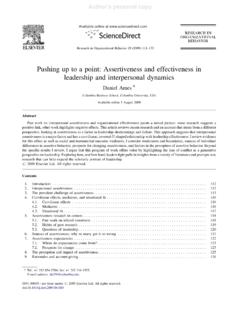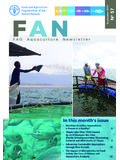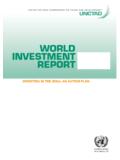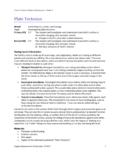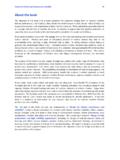Transcription of Guidelines Manual Wheelchairs - WHO | World Health ...
1 Guidelines on the provision ofManual Wheelchairsin less resourced settingsISBN 978 92 4 154748 2 For more information, contact: World Health Organization20, avenue AppiaCH-1211 Geneva 27 SwitzerlandTel.: (+ 41 22) 791-2715 Fax: (+ 41 22) ON THE PROVISION OF Manual Wheelchairs IN LESs RESOURCED SETTINGSG uidelines on the provision ofManual Wheelchairsin less resourced settingsWHO Library Cataloguing-in-Publication DataGuidelines on the provision of Manual Wheelchairs in less-resourced - economics. - supply and distribution. - standards. persons - rehabilitation. countries. Health Organization. ISBN 978 92 4 154748 2 (NLM classification: WB 320) World Health Organization 2008 All rights reserved. Publications of the World Health Organization can be obtained from WHO Press, World Health Organization, 20 Avenue Appia, 1211 Geneva 27, Switzerland (tel.)
2 : +41 22 791 3264; fax: +41 22 791 4857; e-mail: Requests for permission to reproduce or translate WHO publications whether for sale or for noncommercial distribution should be addressed to WHO Press, at the above address (fax: +41 22 791 4806; e-mail: The designations employed and the presentation of the material in this publication do not imply the expression of any opinion whatsoever on the part of the World Health Organization concerning the legal status of any country, territory, city or area or of its authorities, or concerning the delimitation of its frontiers or boundaries. Dotted lines on maps represent approximate border lines for which there may not yet be full mention of specific companies or of certain manufacturers products does not imply that they are endorsed or recommended by the World Health Organization in preference to others of a similar nature that are not mentioned.)
3 Errors and omissions excepted, the names of proprietary products are distinguished by initial capital reasonable precautions have been taken by the World Health Organization to verify the information contained in this publication. However, the published material is being distributed without warranty of any kind, either expressed or implied. The responsibility for the interpretation and use of the material lies with the reader. In no event shall the World Health Organization be liable for damages arising from its use. Contributors:Editorial committee Geoff Bardsley, Marc Krizack, Abdullah Munish, Kim Reisinger, Sarah SheldonEditors Johan Borg and Chapal KhasnabisAuthors William Armstrong, Johan Borg, Marc Krizack, Alida Lindsley, Kylie Mines, Jon Pearlman, Kim Reisinger, Sarah Sheldon Peer reviewers Jocelyn Campbell, Stefan Constantinescu, Fiona Gall, K N Gopinath, Sepp Heim, Ralf Hotchkiss, R Lee Kirby, Anna Lindstr m, Matt McCambridge, Shona McDonald, Ray Mines, Alice Nganwa, Jamie Noon, Tone Oderud, Alana Officer, Valeria Rodriguez, Osten Safvelin, Elsje Scheffler, Harold Shangali, Edd Shaw, Gertrud Stehr Hott, Claude Tardif, Isabelle Urseau, David WernerIllustrator Jen McKinlayTestimonial authors Elly Bernard, Anca Beudean, Tun Channareth, Fiona Gall, Matt McCambridge, Shona McDonald, Laura Morales.
4 Keo SovannFinancial support US Agency for International Development Partner organizations Centre for International Rehabilitation, Disabled Peoples International, International Society for Prosthetics and Orthotics, The Motivation Charitable Trust (Motivation), Whirlwind Wheelchair International (Whirlwind) at San Francisco State UniversityDesign and layout was done by L IV Com S 7 Executive summary 9 About the Guidelines 131. Introduction 19 Appropriate Wheelchairs 21 Users of Wheelchairs 21 Need for Wheelchairs 21 Rights to Wheelchairs 21 Benefits of Wheelchairs 23 Challenges for users 24 Wheelchair provision 25 Types of wheelchair 27 Stakeholders and their roles 30 Policy planners and implementers 30 Manufacturers and suppliers 31 Wheelchair services 31 Professional groups 32 International nongovernmental organizations 32 Disabled people s organizations 33 Users, families and caregivers 342.
5 Design and production 37 Introduction 39 Wheelchair design 40 General considerations in wheelchair design 41 Introducing wheelchair design 43 The design process 43 Wheelchair production and supply 45 Table of conTenTs4 I Guidelines on the provIsIon of Manual Wheelchairs In less resourced settIngs Functional performance 46 Wheelchair stability 46 Manoeuvrability 49 pushing efficiency 53 Other functional performance characteristics 54 Evaluating functional performance 56 Seating and postural support elements 56 Seat bases 58 Cushions 59 Backrests 60 Footrests 60 Armrests 61 Rear wheels 62 Evaluating seating and postural support elements 62 Strength, durability and safety 62 Requirements 63 Evaluating strength, durability and safety 65 User trials and follow-up 653. Service delivery 69 Introduction 71 Wheelchair service delivery 76 Steps in service delivery 76 Understanding individual user needs 77 Good practice in wheelchair service delivery 78 Overall service 78 Referrals and appointments 79 Assessment 80 Prescription 81 Funding and ordering 82 Product preparation 82 Fitting 83 Training of users, families and caregivers 84 Follow-up, maintenance and repair 85 Personnel in wheelchair service delivery 86 Manufacturers or suppliers 86 Referral networks 87 Service personnel 87 Monitoring and evaluation 91 The need to measure performance 91 Monitoring 91 Evaluation 93table of contents I 54.
6 Training 97 Introduction 99 Training requirements 102 Referral networks 102 Role of wheelchair service providers 103 Trainers 106 Course modules and contents 107 Course modules 107 Course contents 1075. Policy and planning 111 Introduction 113 Policy 113 Developing a policy 113 International policies 114 Specific wheelchair provision issues 116 Planning 118 Funding strategies 121 Costing 121 Sources of funding 121 Links with other sectors 123 Health services and community outreach campaigns 123 Education 123 Livelihood 124 Social 124 Infrastructure 125 Inclusion and participation 126 Annex A 128 Training resources 128 Other resources 129 The wheelchair is one of the most commonly used assistive devices for enhancing personal mobility, which is a precondition for enjoying human rights and living in dignity and assists people with disabilities to become more productive members of their communities.
7 For many people, an appropriate, well-designed and well-fitted wheelchair can be the first step towards inclusion and participation in United Nations Standard Rules on the Equalization of Opportunities for Persons with Disabilities, the Convention on the Rights of Persons with Disabilities and World Health Assembly resolution all point to the importance of Wheelchairs and other assistive devices for the developing World , where few of those who need Wheelchairs have them, insufficient production facilities exist, and all too often Wheelchairs are donated without the necessary related services. When the need is not met, people with disabilities are isolated and do not have access to the same opportunities as others within their own communities. Providing Wheelchairs that are fit for the purpose not only enhances mobility but begins a process of opening up a World of education, work and social life.
8 The development of national policies and increased training opportunities in the design, production and supply of Wheelchairs are essential next steps. In the light of the realities of the developing World and the immediate need to develop functioning systems of wheelchair provision in less-resourced parts of the World , the World Health Organization (WHO), the US Agency for International Development, the International Society for Prosthetics and Orthotics and Disabled Peoples International, in partnership with the Centre for International Rehabilitation, the Motivation Charitable Trust and Whirlwind Wheelchair International, have developed this document to assist WHO Member States to create and develop a local wheelchair provision system and thereby implement Articles 4, 20 and 26 of the Convention on the Rights of Persons with Disabilities.
9 We extend our thanks to the US Agency for International Development s Patrick Leahy War Victims Fund for its support in producing these Guidelines and assisting in their KrugWorld Health OrganizationLloyd FeinbergUS Agency for International DevelopmentDan BlockaInternational Society forProsthetics and OrthoticsVenus IlaganDisabled Peoples InternationalPrefaceexecuTive summaryThese Guidelines seek to promote personal mobility and enhance the quality of life of wheelchair users by assisting Member States in developing a system of wheelchair provision to support the implementation of the Convention on the Rights of Persons with Disabilities (and specifically Articles 4, 20 and 26) and World Health Assembly resolution 58/23 of 25 May 2005. The Guidelines focus on Manual Wheelchairs and the needs of long-term wheelchair users. The recommendations are targeted at those involved in wheelchair services, ranging from design and planning, to providing or supplying Wheelchairs and their Guidelines are divided into five chapters:1.
10 Introduction2. Design and production3. Service delivery4. Training5. Policy and planning1. IntroductionThe introductory chapter describes the need for and benefits of Wheelchairs , types of Wheelchairs , and systems for their provision. It also defines the requirements of adequate Wheelchairs and introduces the reader to the stakeholders and their roles. A wheelchair must meet the user s individual needs and environmental conditions, provide postural support, and be safe and durable. The wheelchair must be available and affordable and be maintainable and sustainable in the country of use. This is not always easy, because wheelchair users are a diverse group with different requirements and environmental and socioeconomic chapter argues that a wheelchair is more than an assistive device for many people with disabilities; it is the means by which they can exercise their human rights and achieve inclusion and equal participation.










